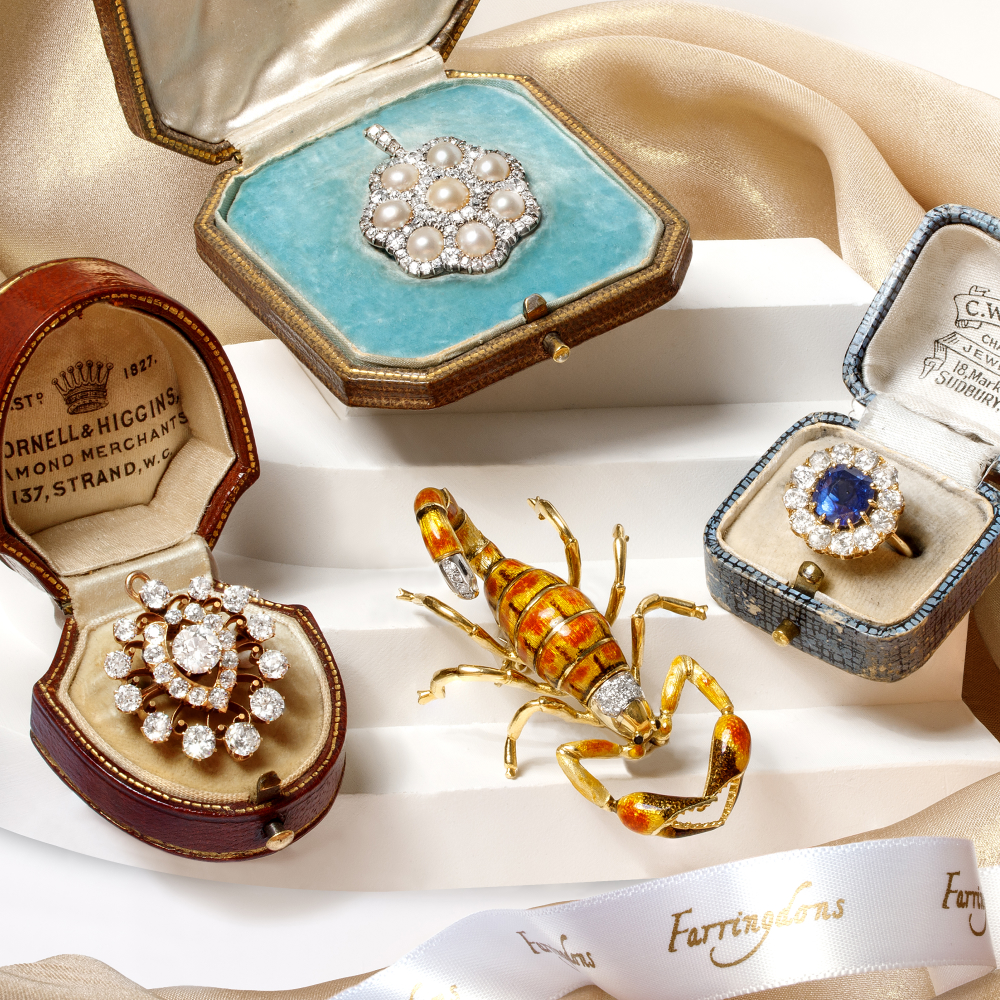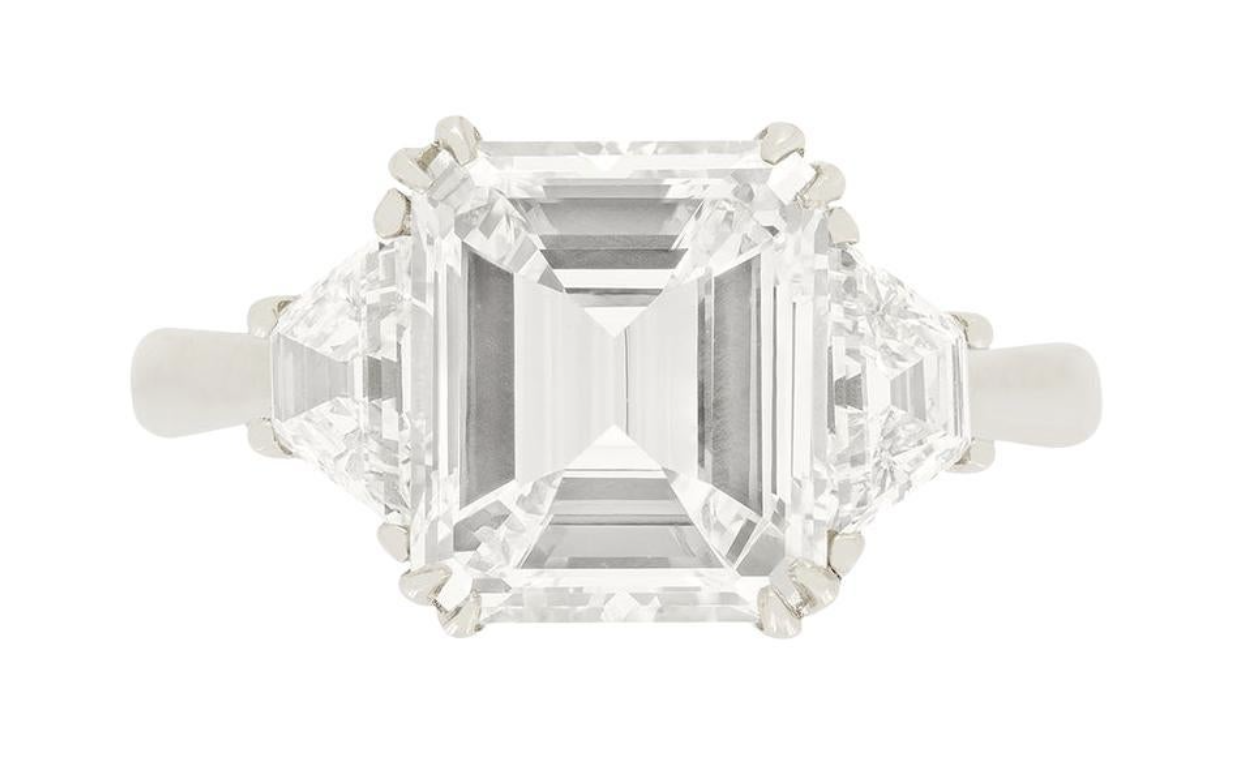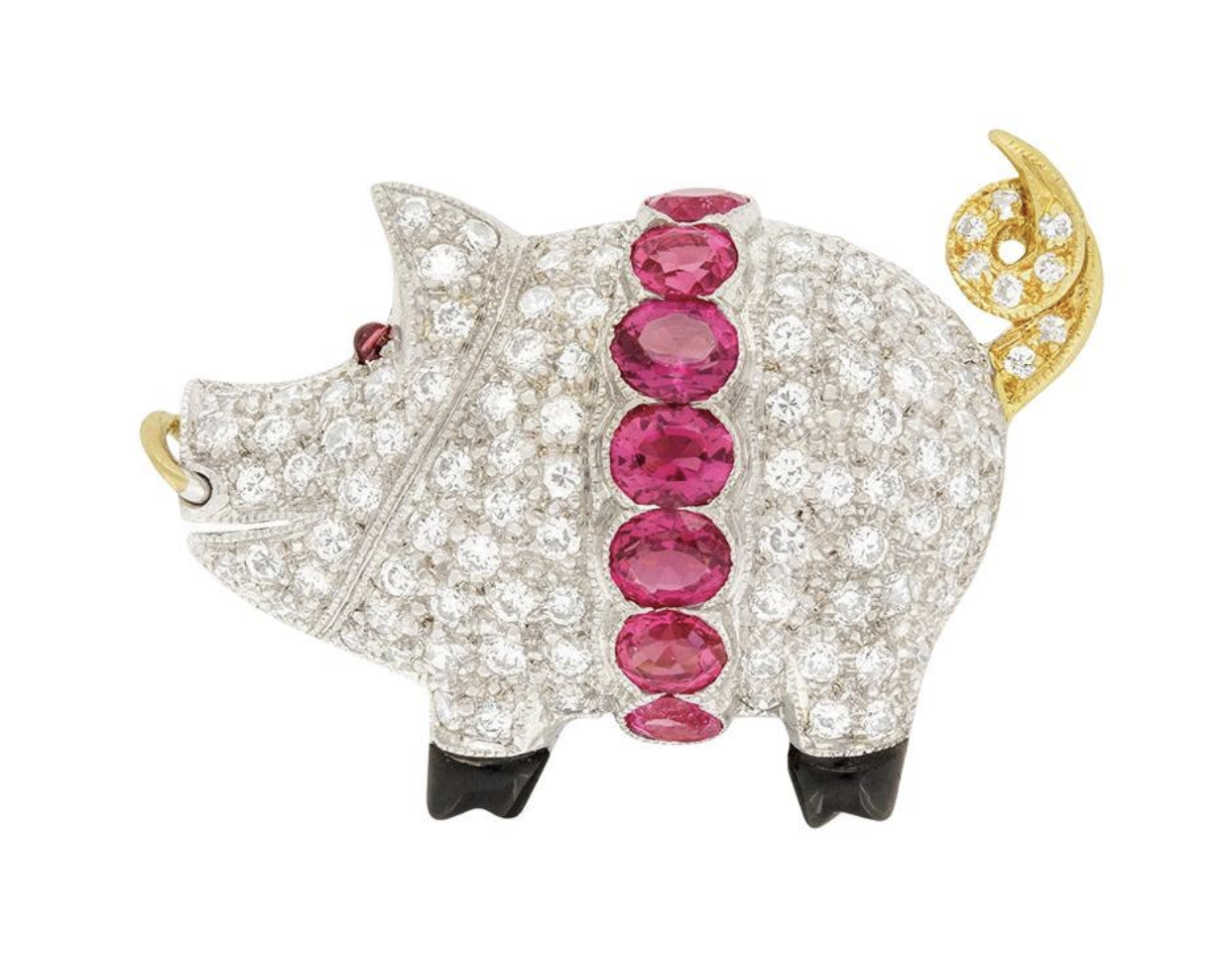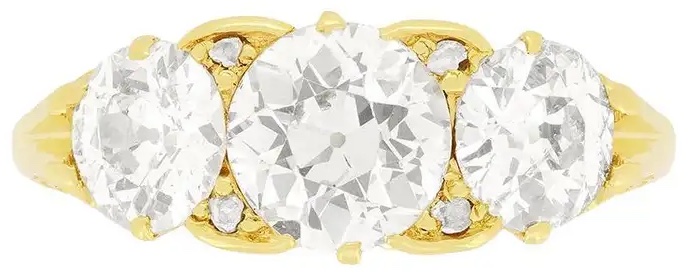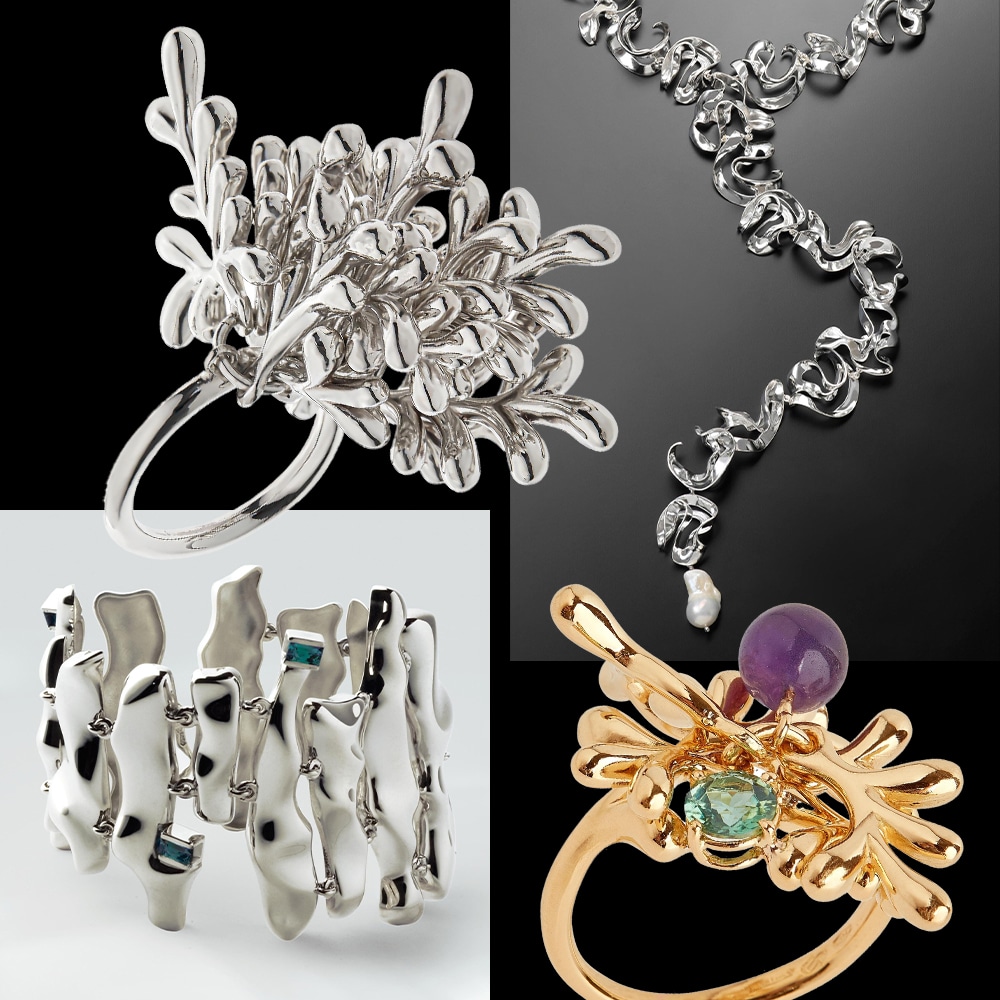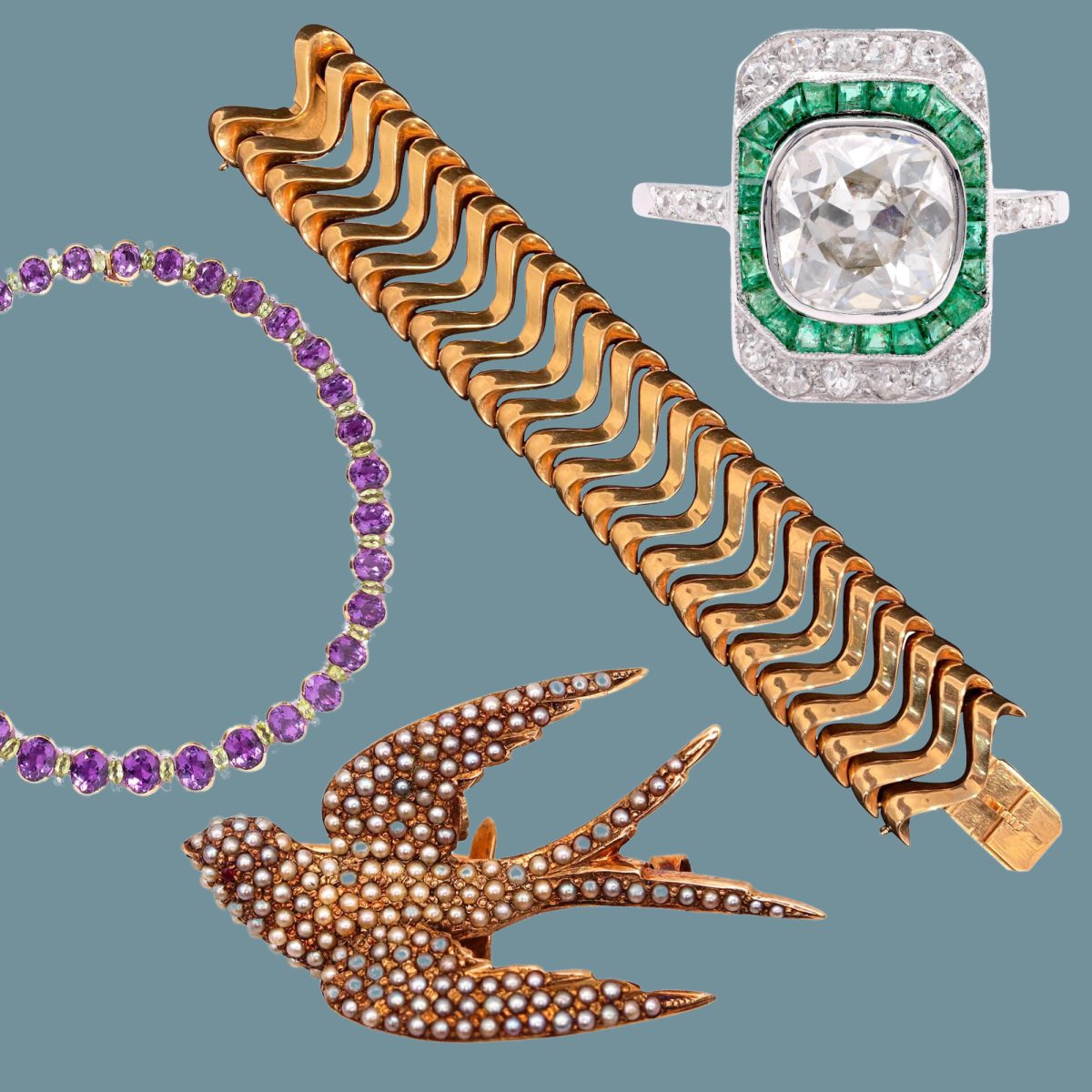November 19, 2023Liam Hicks runs Farringdons in London with the kind of verve that makes you wish you could get engaged over and over again. The boutique, which he more or less took over from his father in 2011, is located in the heart of Hatton Garden, famous as the city’s jewelry quarter, where it specializes in antique and vintage engagement rings.
Farringdons boasts one of the neighborhood’s most bountiful displays, with gemological wonders gleaming from every square inch of the viewing space. There are rows and rows of rings featuring all manner of stone cuts and styles, from Art Deco emerald-and-diamond halo designs and dainty toi et moi styles to old cushion- and brilliant-cut gems and jumbo solitaires.
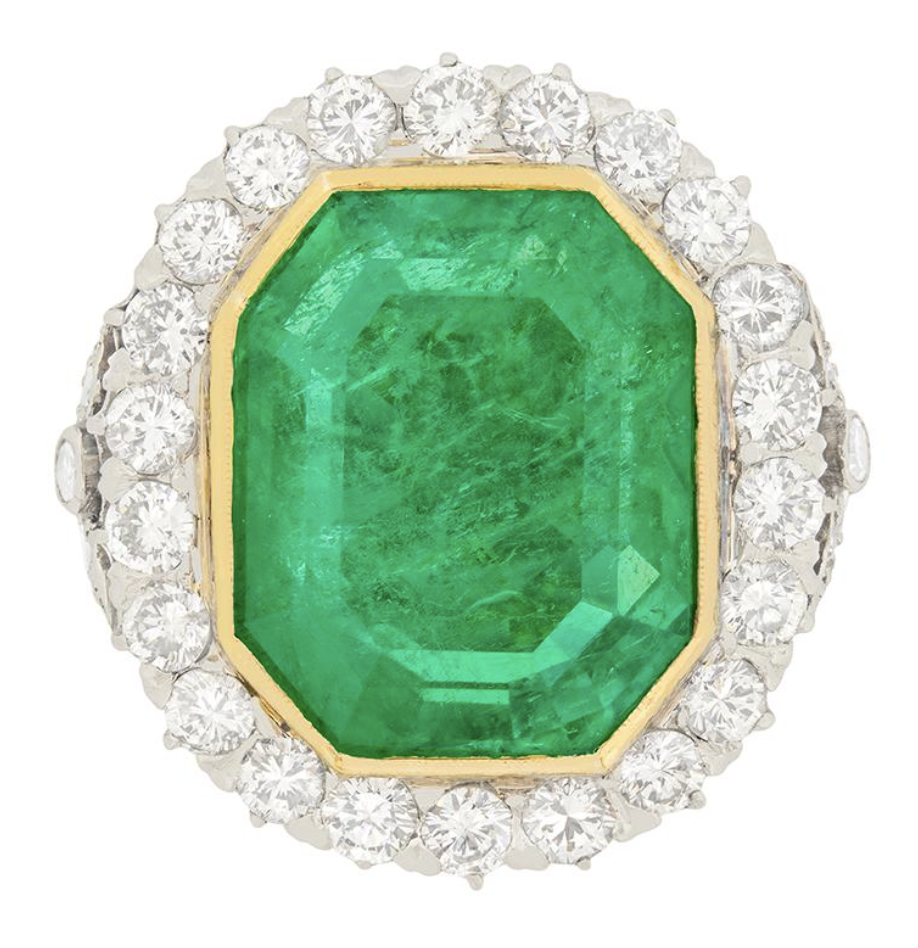
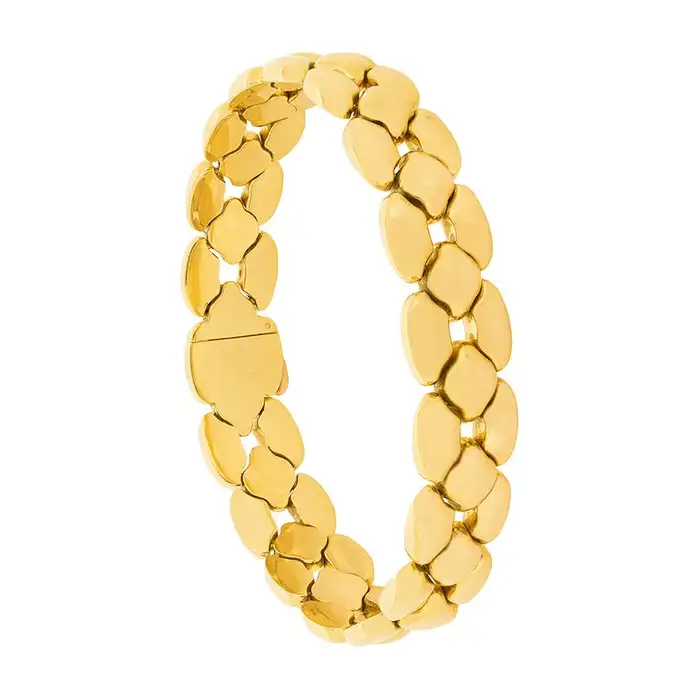
Hicks understands the importance of jewelry fashions and organizes the shop’s vitrine according to what will catch people’s eye. But he buys from the heart, believing that jewelry should speak to the soul. “I love what I love,” he says. “Sometimes, it’s not the most on-trend design at that point in time, but it’s always something special, whether it’s a stonking blue sapphire piece or a dainty diamond cluster ring.”
Hicks and his sister Alex, who also works in the boutique, grew up around jewelry, learning the ropes from their father, Mark, who continues to play an active role in the business. “Dad’s old school,” Hicks says. “He still gets a big thrill from the buying and selling process. Buying especially. He almost leaps out of his chair when a customer has something special to sell.”
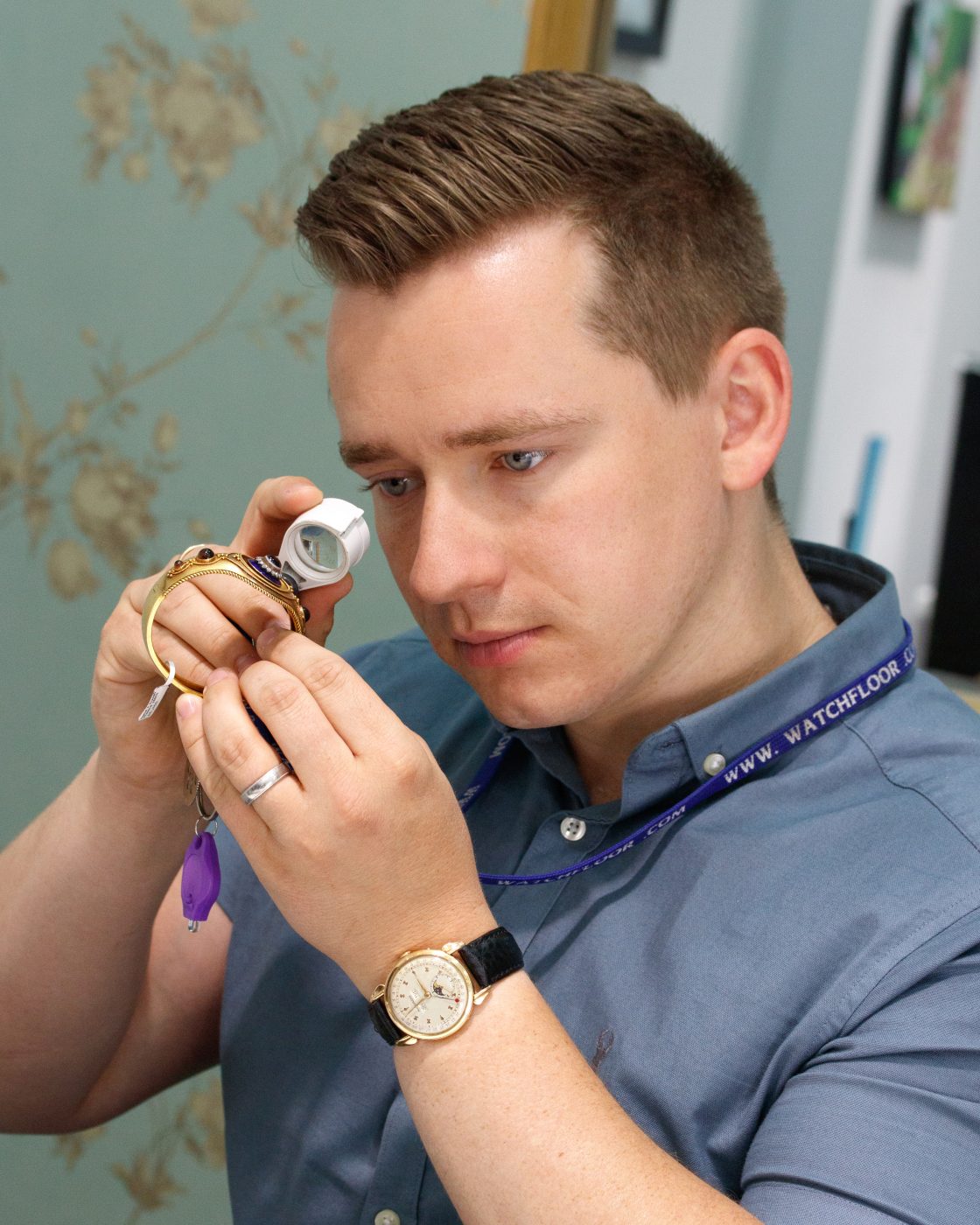
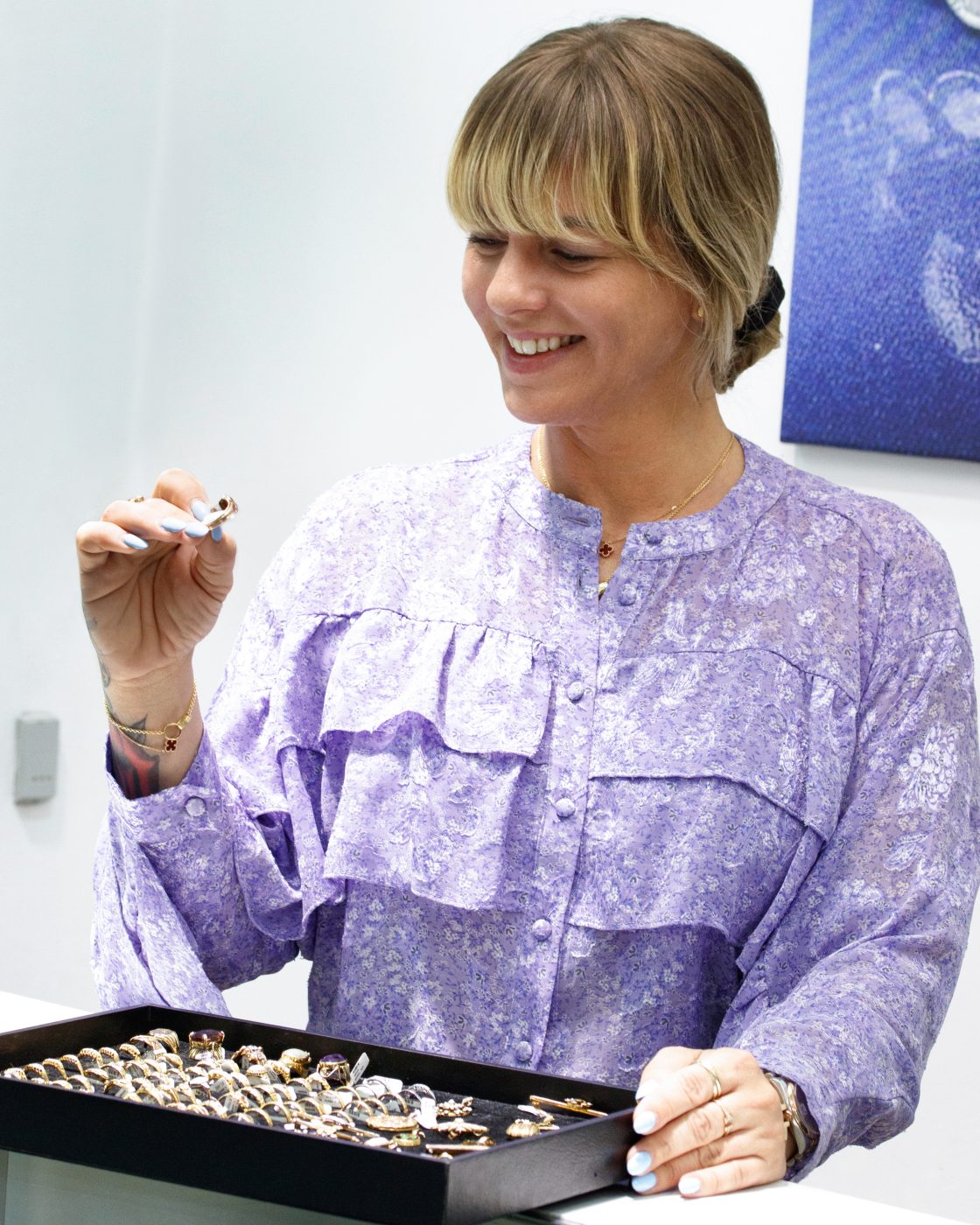
Although it was his father who dealt in antique pocket watches, it was Mark who established the family name within the world of jewelry. He set up stalls at London markets like those in Camden Passage, Covent Garden and Portobello Road — all known to attract professional dealers, enthusiasts and collectors from across the UK and beyond. “Dad started fly-pitching [street bartering] at the age of thirteen,” says Hicks. “He wasn’t interested in school, but he enjoyed earning money. He transitioned from pocket watches and antique furniture to jewelry by sharpening his expertise, which gave him that magpie eye for rarities and one-offs.”
As a teenager, Hicks spent his weekends and holidays by his father’s side and became interested in how people are drawn to certain designs and gem cuts. He studied the physical properties of gemstones, including the 4Cs — cut, color, clarity and carat weight — which determine the value of a diamond. At the same time, he immersed himself in the history of the different styles, their connections to art, culture and craft movements, familiarizing himself with every hallmark and maker’s stamp, each of which tells a story.
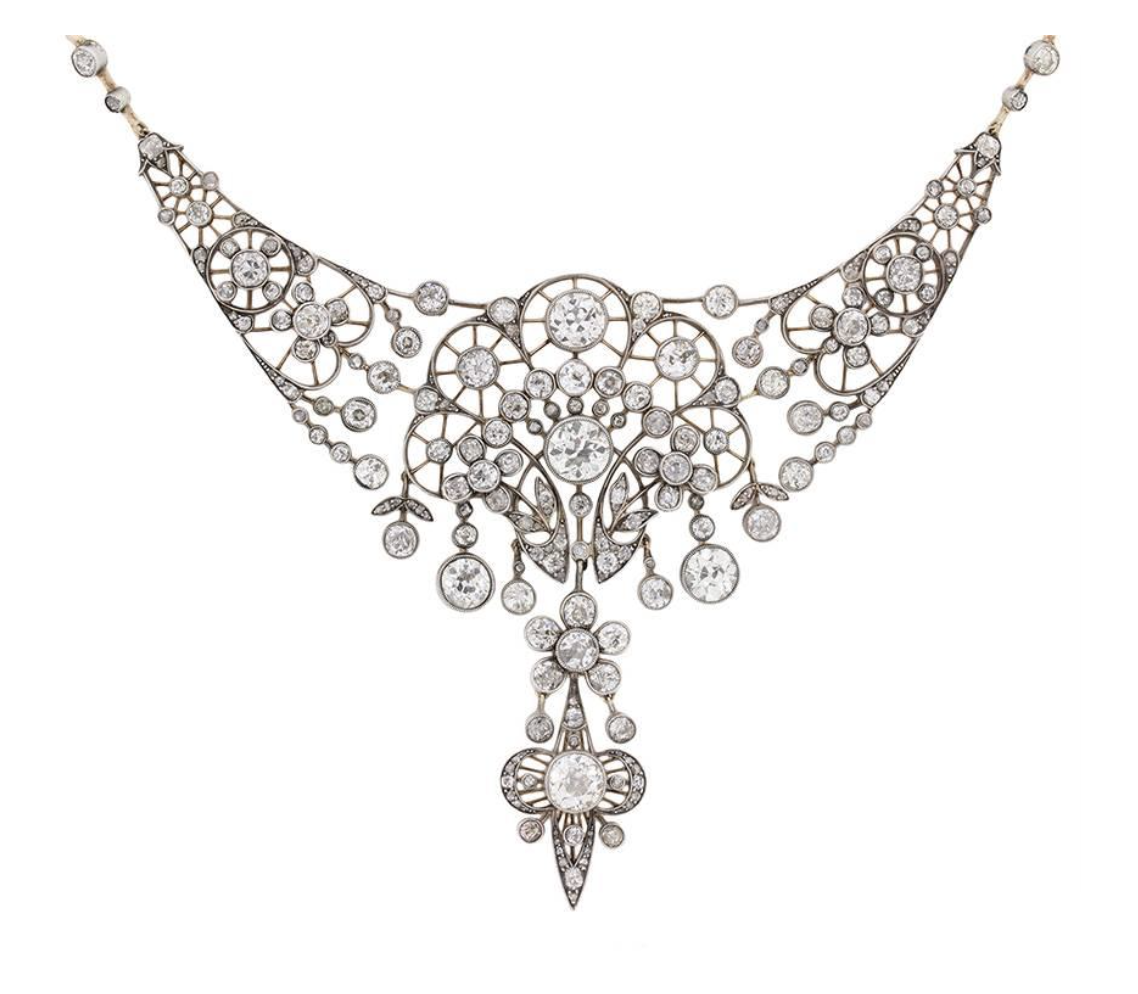
“You learn as you go, and as I’ve been here in the shop for twelve years, working six days a week — that’s a lot of information,” he says, tapping his temple with a knowing smile. “It’s always nice to clarify things for people. For example, French vintage pieces, including those by Cartier, are often hallmarked with an eagle’s head for eighteen-karat gold [a practice established in 1838] or a dog’s head for platinum [introduced in 1913]. Importantly, they feature on the outside of the band. There have been a number of customers who have thought these were dents in the metal, and that’s when I get my loupe out to show them these tiny symbols up close.”

Recently, Farringdons has noted an increase in popularity for oval-cut diamonds and for particularly effulgent two-to-four-carat stones accented with icy baguettes on either side, a signature of the Art Deco era. “My favorite of this type is a platinum solitaire ring set with an impressive 5.18-carat diamond,” Hicks says of a piece with a six-figure price tag. “It’s an old cushion cut with slightly elongated proportions, which is extremely rare. The way it reflects the light is phenomenal. In fact, it’s the one everyone wants to try on. Most ladies take it off pretty quickly when they learn the price,” he concludes with a smile.
Also on the rise are Edwardian and Art Deco target rings, which feature a central stone surrounded by calibre-cut diamonds and/or colored gemstones, a combination that creates a dance of light, drawing the eye deeper into the heart of the ring. “Vivid emeralds are particularly arresting against the icy color of diamonds on target rings,” says Hicks. Adding to their allure, the rings are considered symbols of eternal love because of their radiating concentric circles and, of course, their name, which calls to mind love’s best-known archers, Eros and Cupid.
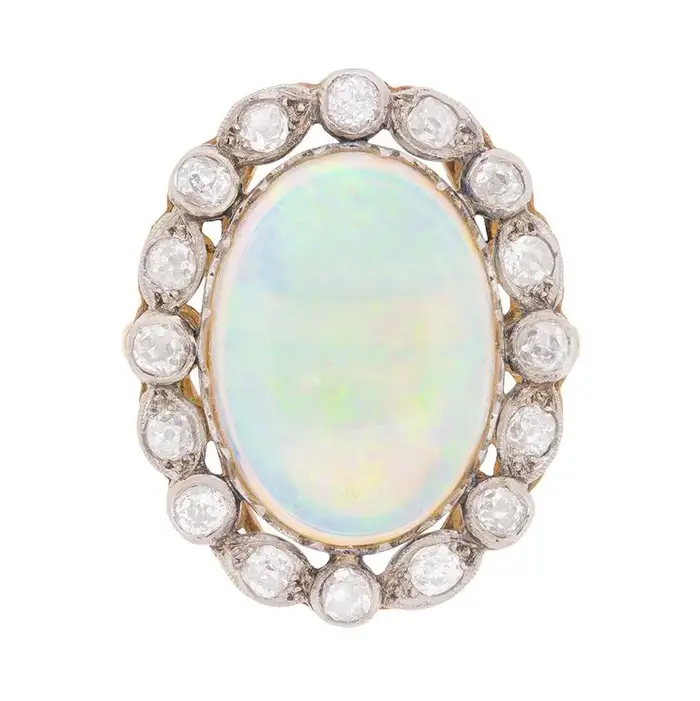
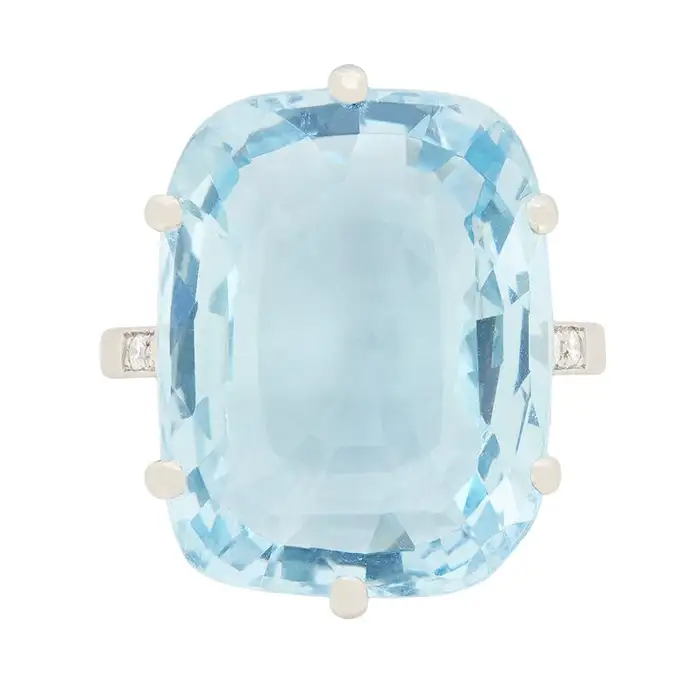
Besides engagement rings, Farringdons offers plenty of interesting jewels for the solo shopper, some more intriguing than others. In one vitrine, I spotted a yellow-gold Cartier ring with tiny diamonds set in a delicate floral motif, identical to one given to me in my 20s by a former flame. I sold it for less than $500 in 2001 after the relationship ended — a decision I’ve regretted ever since. Seeing the design again (apparently it was discontinued by Cartier in the early aughts), I felt compelled to buy it. My purchase wasn’t spurred by sentimentality about a long-ago love but just for the fun of it — an act of self-love and happy indulgence.
Hicks isn’t surprised by this story. “People’s connections to jewelry run deep. Sometimes, a ring can trigger a romantic memory — other times, as in your case, it’s more about the relief of not being with that person,” he says, laughing.
Hicks’ penchant for rings is matched by his fondness for vintage and antique brooches. “Some are weird and whimsical, like my late-Deco diamond-and-ruby piglet [complete with tiny diamond-encrusted corkscrew tail and gold nose ring], while others are more classic, diamond-set and cast in the shape of bows or open-worked geometric shapes.”
Then, of course, there are the giant gems. These are possibly not suited to a marriage proposal, unless you want to channel your inner Elizabeth Taylor. Examples include a dazzling 14-carat aquamarine cocktail ring that screams 1980s glamour, a 1960s gold dress ring adorned with a purple cushion-cut amethyst the size of a Skittles candy and a 1910 Edwardian dazzler set with a giant opal that emits shimmering iridescence from every angle.
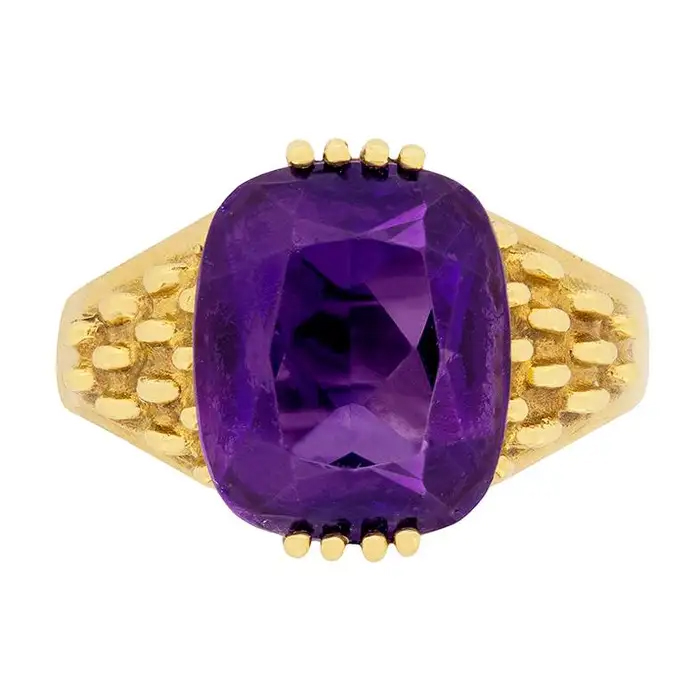
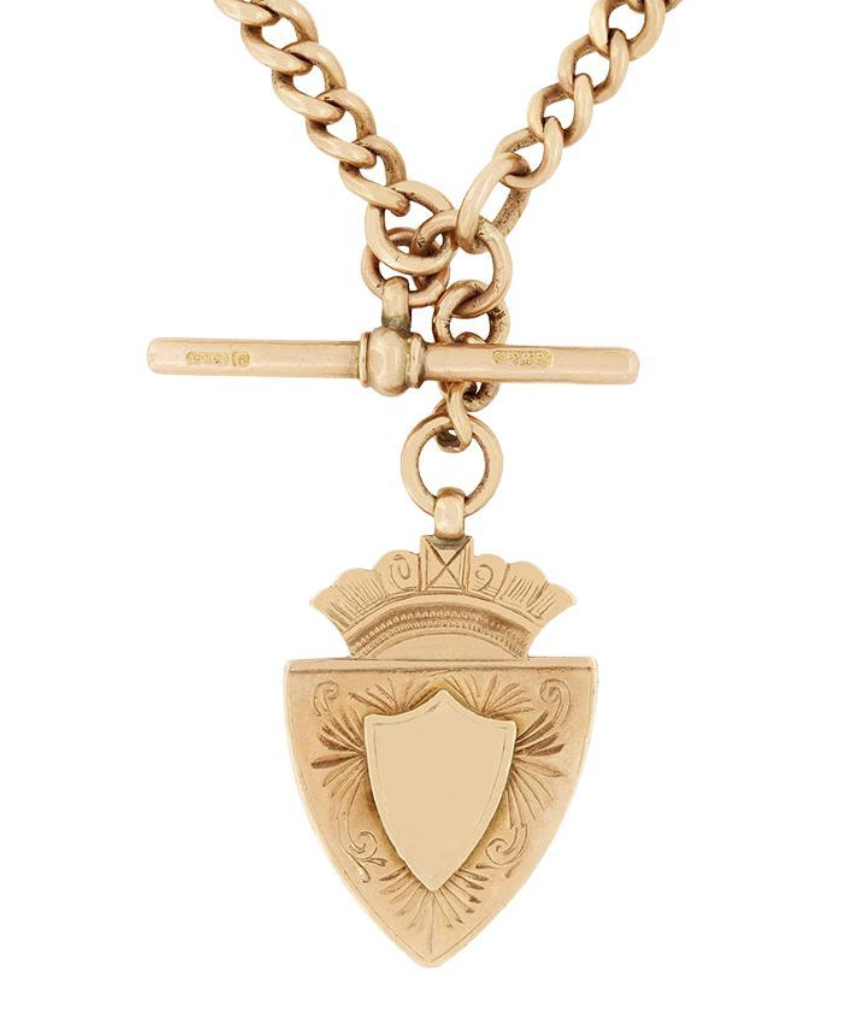
In terms of late-20th-century treasures, Farringdons embraces the bold and the iconic. The Cartier Margot collection is a case point. Comprising a choker, bracelet, earrings and ring crafted entirely from polished 18-karat gold, this early-’90s set is distinguished by its oversize link design. “It’s so audacious. So of its era,” enthuses Hicks. “It’s almost impossible to find an entire vintage Cartier suite these days, so it’s really exceptional. You can imagine it being shot for a lavish magazine shoot back in the day, all four pieces modeled at once.”
Some jewelry designs, he notes, don’t just transcend trends — they cultivate the imagination. “We sell a lot of Albert chains, originally used for pocket watches, as necklaces,” Hicks says. “When you see them on, they look so cool you’d be forgiven for thinking they were contemporary designs and not made a hundred years ago. That’s the buzz of collecting and selling antique jewelry. It’s a constant source of light, in every sense of the word.”
